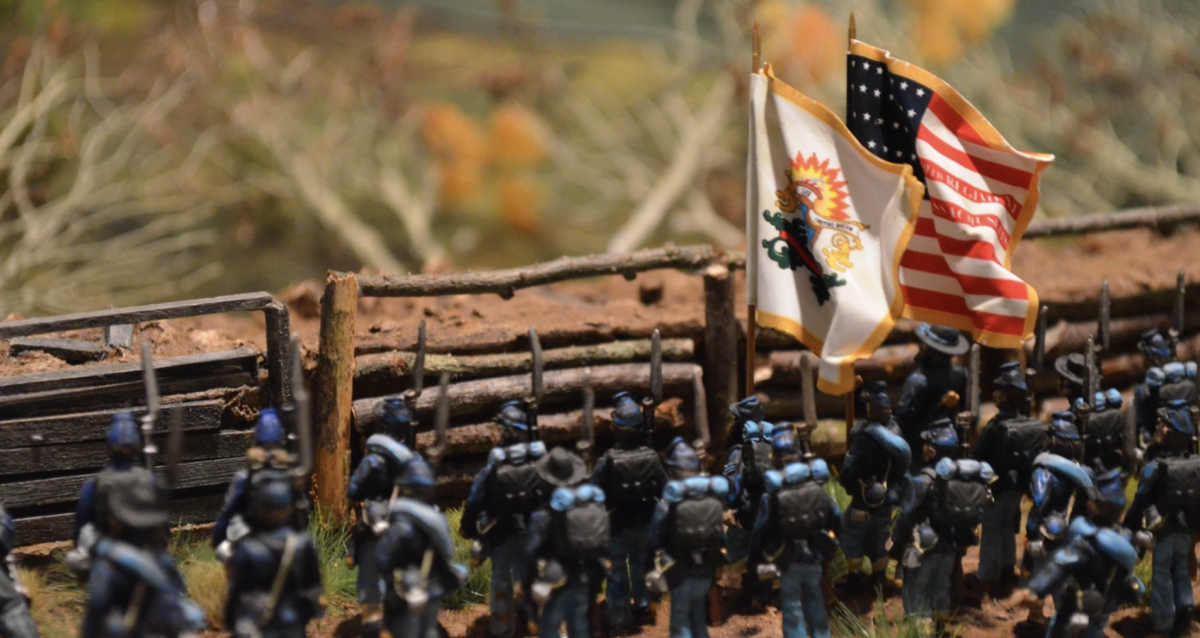A very nice crowd came out today to listen to Maury County historian Bob Duncan, talk about the history behind St. John’s Church, in Columbia, Tennessee. The church is rarely open to the public. The Franklin Civil War Round Table sponsored today’s event.

St. John’s is famous for what Confederate General Patrick R. Cleburne is supposed to have said about it in late November 1864 when he was passing it, on the way to Franklin just days later. He is supposed to have remarked to aides something to the effect, “This church is such lovely place. One would almost wish to die so one could be buried here.” Cleburne would indeed lose his life just days later at Franklin and his remains were initially interred here by Chaplain Charles Todd Quintard.
Cleburne was supposedly originally buried in this area (below) behind the church.

A memorial plaque was installed on the church exterior in 1947 and reads as follows:
Erected in 1842 for worship and spiritual instruction of white and negro people, built under
supervisions of the Rt. Rev. Leonidas Polk, Bishop of Louisiana, on land given by him and with labor and materials contributed by him and his brothers, R.K. Polk, G.W. Polk, L.J. Polk, and Dr. W.J. Polk. Delivered into care and custody of the Bishop of Tenn. as the property of the Diocese of Tenn.
Consecrated Sept 4, 1842, by Rt. Rev. James Hervey Otey, D.D., Bishop of Tenn., assisted by Bishop Polk.
Bishop Otey, whose remains rest in the church-yard, was born Jn. 27, 1800; consecrated in Christ Church, Philadelphia, Jan. 14, 1834; died April 23, 1863, in Memphis, Tenn.
At the Battle of Franklin in Nov. 1864, the following Confederate Generals were killed, and among others were buried in St. John’s Church-yard by Chaplain Charles Todd Qunitard, M.D., their bodies afterward being removed to their respective states.
Maj.-Gen. Patrick Cleburne Brig. Gen. H.B. Granberry
Brig. Gen O.P. Strahl Brig. Gen. S.R. Gist
Annual pilgrimages, held on the last Sunday in May with services led by Bishop of Tenn., were initiated in 1921.
Custody and upkeep of the property is in charge of St. John’s Association, organized May 25, 1924.
Rt. Rev. James M. Mason, D,D. President, Wm Dudley Gale, Treas.
This memorial erected 1947 by
Diocese of Tennessee
St. John’s Association
Tennessee Historical Commission

I took a lot of photos of the exterior (grounds and cemetery), the interior, and the exterior of the church itself. They are accessible from this Flickr gallery.

Historian Bob Duncan gave a very informative and entertaining talk about the church. The last regular meeting in the church was in 1915. Since then it only hosts an annual service on Whitsunday.
Vandals did a lot of damage to the church in 2001 but the community pulled together to clean it up and ready it for the annual service just a couple weeks later.
There has never been any significant restoration done to the church since its consecration in 1842. It is in remarkable condition. The bricks and wood used for the construction of the church, and its furniture, were all provided on site.
The Polk family of Columbia, Tenn., built the church as a family/plantation church.













